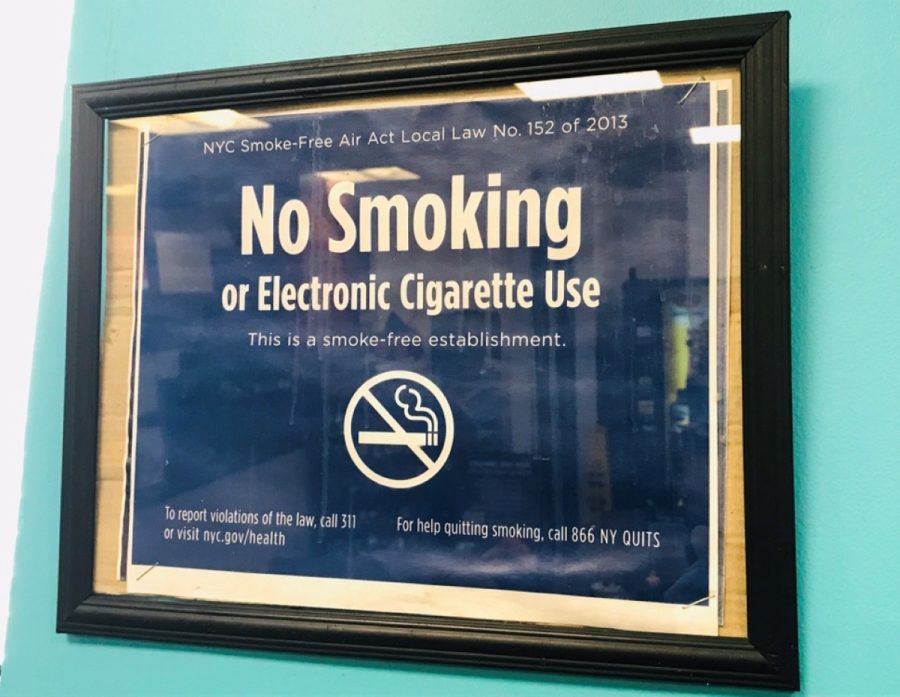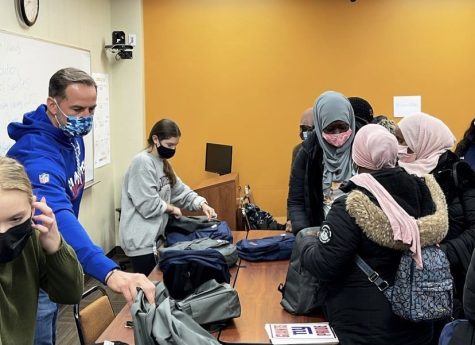Flavored Vaping Product Ban Affects Belmont Community
Less than two weeks ago, the New York State Appellate Division of the Supreme Court delayed Gov. Andrew Cuomo’s state-wide, 90-day ban of flavored vaping products. The ban was originally set to go into effect on Friday, Oct. 4, but was halted after the Vapor Technology Association sued and accused New York state of overreach. The court will hold a hearing on the issue this Friday, Oct. 18. However, some store owners in the Belmont community are already seeing a decline in sales.
The embargo would prevent retailers, via a $2000 fine, in New York from selling any and all vaping liquids in flavors other than tobacco and menthol. Spectrum News NY1 and CNN Business have reported on vape shop owners’ responses to the ban, the latter stating that 90% of the sales of one store, VapeNY, come from flavored vaping products.
Ali Ahmed of Rams Village Smoke Zone on Fordham Road spoke with The Fordham Ram on the possible ban.
“It’s good for people to stop smoking, and it’s bad for business,” said Ahmed. “[The] cigarette is nicotine and the oil is nicotine. If they stop this, they have to stop cigarettes, in a way, because all of them are nicotine.”
Ahmed said that the sales of vaping products, such as JUUL’s mint-flavored cartridges, have dropped since the ban’s proposal.
“Before [the mint sales were] at like 16 [boxes per day]. Right now, I sell maybe eight, or six or five, a day,” he stated. One box contains four “JUULpods,” the equivalent to four packs of cigarettes, according to JUUL’s website.
The effects may hit other retailers, such as bodegas. Madhi Awath of Rams Deli Plus agrees with Ahmed’s belief that if flavored vaping products should be banned, so should cigarettes.
“It is gonna affect the business because, you know, not just Fordham kids buy it,” said Awath. “A lot of people buy it. … For us, [business will not be affected] that much, but I don’t know. It’s hard to tell because … I feel like we should ban the cigarettes more than the JUULpods.”
Currently, the flavor that sells the most at Rams Village Smoke Shop is mint, while tobacco and menthol do not sell well.
“A lot of people don’t like [tobacco and menthol],” Ahmed said. “Before it was the mango, right now it’s mint that’s the bestseller here. Tobacco is not a good-seller. Any place you go to, mint and mango, that’s the bestsellers. Tobacco, a few people get it. When they get it, they taste it and say it’s not good. Tastes nasty, you know?”
Conor Vonderahe, GSB ’21, said he believes that the taste of the tobacco and menthol flavors will prove the flavor ban effective.
“It will be effective because I think a huge pull of vaping is the flavor, and that some of the flavors such as tobacco and menthol aren’t what kids are looking for,” said Vonderahe. “Getting rid of [my friends’] favorite flavors will help spur them to get off of it.”
Anthony Patrados, FCRH ’21, said he thinks the ban on flavored nicotine products will have a positive influence.
“The proposed ban on flavors is definitely a step in the right direction, because I think a lot of young adults/teens stuck on nicotine only got onto it because of such a variety of flavors, almost targeted for children specifically,” said Patrados. “…A lot of my good friends will certainly be affected. I’m hopeful that the ban will get them to quit for good now—yet, unfortunately I can see a lot of my friends simply turning to other products, which are just as, if not more, harmful than vape, such as cigarettes/chewing tobacco.”
Ahmed believes that it is not the nicotine in vaping products, but the tetrahydrocannabinol (THC), that is the problem.
“Once they get this THC oil in, that’s when people start dying,” stated Ahmed. “Before this one, nobody heard about nothing. … THC, definitely the THC.”
The Centers for Disease Control and Protection (CDC) stated as of Oct. 11, 2019 that there is a correlation of vaping-related deaths and THC-containing vaping products.
“Most patients report a history of using tetrahydrocannabinol (THC)-containing products,” states the CDC on its website. “The latest national and state findings suggest products containing THC, particularly those obtained off the street or from other informal sources … are linked to most of the cases and play a major role in the outbreak.”
The CDC does not rule out nicotine’s role in the crisis, which includes 26 deaths in the United States.
“Exclusive use of nicotine containing products has been reported by some patients with lung injury cases, and many patients with lung injury report combined use of THC- and nicotine-containing products,” the statement continues. “Therefore, the possibility that nicotine-containing products play a role in this outbreak cannot be excluded.”
Patrados cited the lack of research into vaping products, in addition to using informally-sourced products, as a reason to be wary.
“While vaping isn’t necessarily as harmful as cigarettes, it is still loaded with carcinogens and there hasn’t been enough research to determine how damaging vaping is on the lungs,” he said. “Especially at risk are those vaping THC because a lot of people buy carts from unreliable sources and have no idea what’s actually in the product they’re inhaling.”
Ahmed concluded by saying more testing on vaping products needs to be conducted for consumer safety.
“People gotta be safe,” he said. “That’s the first thing.”
Copy Chief for Volume 101.















































































































































































































